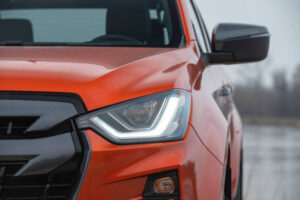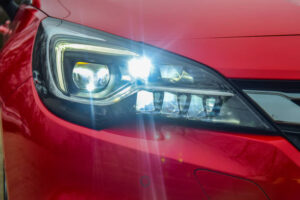Don’t Fall Into These H4 LED Headlight Bulb Snafus: Fix Installation Fumbles
Are you seeking to make an impeccable overhaul in the lighting system of your car? The h4 led headlight bulb is a technological wonder but replacing the halogen bulbs is a nightmare even for experienced, do-it-yourselfers. It looks like a simple thing to do, but there is a frustrating installation motion, the sticky topic of color temperature and other things to consider about this job. In case you want to avoid the headache and enjoy your night-vision, you must be able to avoid several typical mistakes. Strap on your seat belt-it is time to illuminate these land mines and demonstrate how you can max out your headlights to eleven (without an illuminated warning sign on your dashboard).

Typical H4 LED Bulb Installing Errors
This lowly H4 bulb has guided millions of people. Not always, though, does LED replacement come in to fit easily as its halogen predecessors did. Since we are here to have a look at where things typically go awry, let us disentangle things.
1: do not take Polarity into account
Old school bulbs do not mind whether they are connecting to positive or negative. Light-emitting diodes (LEDs), however, definitely do. When you install your new H4 LED into the outlet and receive a blank look (that is, the lights do not come on), the most probable cause is reversed polarity. Unplug, flip and restart. In most cases, that is all there is.
2: Misplaced Bulps
Deployment is the key. H4 LEDs are featured with different high and low beams. by thrusting the bulb in at an inappropriate angle, you will be flinging light at random, all around, and dazzling the other drivers, and causing yourself greater difficulty in seeing. It is worth pausing to recheck orientation when snapping it. You would prefer the LED chips to act like it does in your old halogen (the filament). This is the way to obtain the beam which is beneficial.
3: Dust Covers Ignored
You would want to pull out the old dust covers or just have them hanging. Think twice. Dust covers are not ornamental, they prevent the entry of grime. Take them off and you might be admitting water, wrecks or worse still. Purchase bulbs which match the covers, or look at aftermarket products.
4: Ignoring Heat Dissipation
The LEDs are cooler than halogens, nonetheless, the electronics inside them produce heat. This is the reason why most H4 LED are shipped with large heat sink or fans. By cramming cables together or smashing the housing you can choke off the airflow. Overheating in this case is a silent killer, this reduces the life of the bulb and in some cases it may even melt the connectors. Allow some air to those heat sinks.

5: Failure to test prior to re assembly
No one wants to erect everything again in order to destroy it once again. The thing is not to forget to test your recent LED bulbs until you replace dust boots, clips, or headlight covers. Turn them on, fiddle with both the beam settings, and sight down the cutoff line against a wall. It is a two-minute task to fix an incorrectly positioned light or a bulb that is no longer working. Later? By no means so much.
6: Ignoring Canbus Compatibility
A lot of new vehicles will have a tantrum when they detect the presence of non-standard bulbs. You wire the LEDs. Dashboard lighted like Christmas tree. This is so because the car considers that your headlight has burst. See whether your car requires Canbus-ready LED. It may be necessary to have a decoder that can smoothen its operation and prevent errors.
The effect of the color temperature on the road-clearness.
There is no use in screwing in your H4 LED bulbs seamlessly and having the wrong color temperature. However, what is the difference? Are all the bright white lights the same good? Not quite.
Learning about the Color Temperature
The light is characterized by color temperature which is expressed in Kelvin (K). Numbers that are lower (3000K-4000K) produce a yellowish light. Above these (6000K-8000K) there is a thrust into the cold blue-white regime.
Yellowish light (3000K-4300K): Very good at foggy, raining or snowy nights. It penetrates through fog and restores glare.
White light (5000K-6000K): Is the closest to daylight. Great when viewing objects on dry clear roads.
Blue tint (over 6500 K): Fashionable, though it decreases contrast. When driving long distances your eyes will fatigue faster.
Clarity on the Roads Under any Weather
As a matter of fact, that 6000K cool white usually appears the sharpest, at least on paper. However, during heavy rain or fog, it reflects moisture, and as such, it makes the situation worse. You lose a bit of cool factor with a 4300K bulb, but you trade it off with improvement in penetration and clarity. And that is no little matter in a back-road of pitch blackness in a downpour.
Legal and Discernible Considerations
There is also legislation that limits the color of headlights in some jurisdiction. Do not end up with suspiciously bluish (more than 6500K) new LEDs, as you can easily attract the attention of the police and other road users as well. To be on the safe side, you need to make sure to look at your local laws before making a purchase.

Eyes and Fatigue of Human Beings
Another forgotten fact is that excessively bright or blue lights can be more harsh on the eyes particularly among drivers who record heavy night miles. The nearer your headlights color temperature approximates genuine daylight (round 5500K), the less the strain undermining your retinas. Fatigue sneaks on you like it has a reputation to keep and before you know what has happened to you, you find yourself squinting or having headaches. Forget about looking Noel Gallagher cool in blue shades, a cool appearance is pointless when you cannot see properly out of the sunglasses in the evening, that is, unless you are into the 80s feel of squinting in the dark.
Maximize Your H4 LED Conversion
H4 LED upgrade can be defined as a style and safety investment. Avoid the common traps: verify the polarity, pay attention to bulb alignments, retain those dust covers, honor the path to heat dissipation and always do a test before buttoning them. You need to inspect the Canbus conflicts before hiking with a newly bought car.